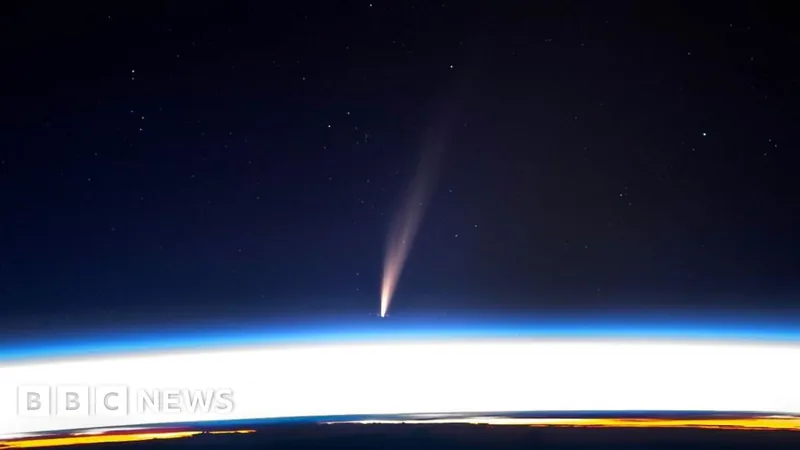
Once-in-a-Lifetime Comet Set to Dazzle Earth After 160,000 Years!
2025-01-13
Author: Lok
Get ready, stargazers!
A spectacular celestial event is approaching, as a dazzling comet—designated Comet C/2024 G3 (Atlas)—is expected to grace our night skies for the first time in an astonishing 160,000 years. This is a once-in-a-lifetime opportunity that you won't want to miss!
What to Expect
NASA has cautioned that predicting the exact brightness of comets can be notoriously tricky. However, experts believe that this comet might be bright enough to be clearly visible to the naked eye. The key moment came on Monday when Comet C/2024 G3 reached perihelion, its closest approach to the Sun, a crucial factor that significantly influences its brightness.
Where to See It
Though precise locations for optimal visibility remain largely unknown, it’s thought that observers in the southern hemisphere will have the best chances of witnessing this cosmic marvel. Excitingly, astronomers anticipate it could shine as bright as Venus, creating a spectacular sight along the eastern horizon before sunrise and later, a stunning display towards the western horizon after sunset.
The Discovery
Discovered last year by NASA's Asteroid Terrestrial-impact Last Alert System, Comet C/2024 G3 has already started to pique the interest of astronomers worldwide. Dr. Shyam Balaji, a researcher at King's College London, explained that current orbital calculations suggest the comet will pass approximately 8.3 million miles from the Sun, officially classifying it as a "sun-skirting" comet.
Advice from Experts
Given its potential brightness and the rarity of such events, Dr. Balaji remarked on the unpredictable nature of comets, noting that while conditions might be favorable for visibility around perihelion, local weather and the comet's behavior could affect views. Observers in the northern hemisphere, including countries like the UK, might face challenges due to the comet's proximity to the Sun during this time.
How to Prepare
So, how can you prepare to catch this extraordinary comet? Start checking the weather conditions early! Clear skies are crucial for a successful observation. For those in the southern hemisphere, keep your eyes peeled on the eastern horizon just before dawn, and after perihelion, don't forget to scan the western horizon after sunset.
Don't Miss Out!
Don't let this unique opportunity slip away—mark your calendars and ready your telescopes! This comet is not just any comet; it's set to be a shimmering mystery that comes around once every 160,000 years!

 Brasil (PT)
Brasil (PT)
 Canada (EN)
Canada (EN)
 Chile (ES)
Chile (ES)
 Česko (CS)
Česko (CS)
 대한민국 (KO)
대한민국 (KO)
 España (ES)
España (ES)
 France (FR)
France (FR)
 Hong Kong (EN)
Hong Kong (EN)
 Italia (IT)
Italia (IT)
 日本 (JA)
日本 (JA)
 Magyarország (HU)
Magyarország (HU)
 Norge (NO)
Norge (NO)
 Polska (PL)
Polska (PL)
 Schweiz (DE)
Schweiz (DE)
 Singapore (EN)
Singapore (EN)
 Sverige (SV)
Sverige (SV)
 Suomi (FI)
Suomi (FI)
 Türkiye (TR)
Türkiye (TR)
 الإمارات العربية المتحدة (AR)
الإمارات العربية المتحدة (AR)